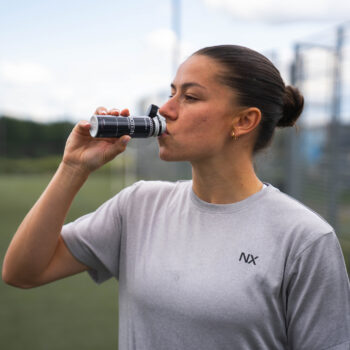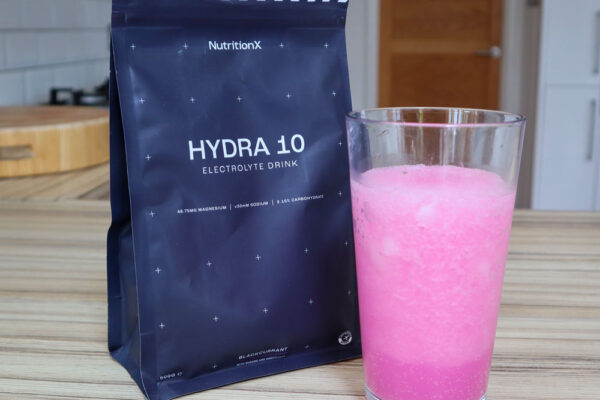In the past decade, women’s football has seen an explosion in popularity and professionalism. From the inspiring performances at the UEFA Women’s EURO to the growing number of grassroots teams across the UK, the sport has never been in better health. Yet with this surge in participation comes the realisation that nutrition for female footballers needs careful consideration. Whilst some principles of sports nutrition are universal, female players face unique physiological demands and hormonal influences that impact performance, recovery and health.
Here, we look at why nutrition is so crucial for female footballers and the specific strategies that can help them thrive on and off the pitch.
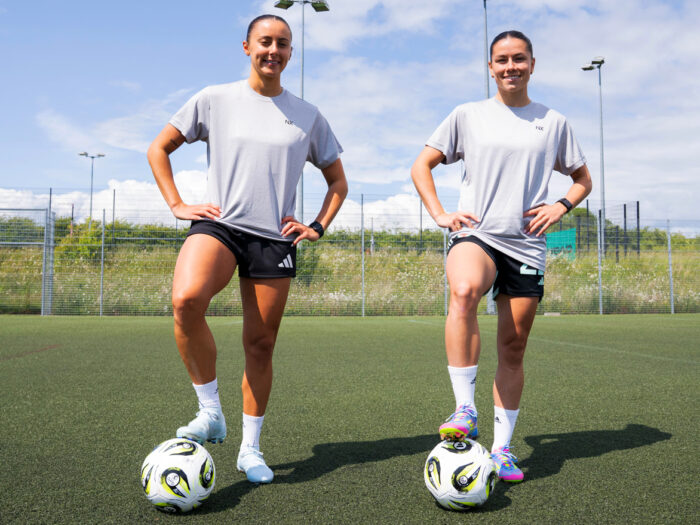
Is nutrition important for female footballers?
Optimal nutrition is fundamental to success in football, whether you are competing at elite level, or training twice a week with your local club. Football is a physically demanding sport requiring repeated high-intensity efforts, sprinting, jumping, tackling and technical skills over long-duration training sessions or a 90-minute period on a match-day, and all of this effort requires fuel.
Research has consistently shown that appropriate energy intake and nutrient timing support endurance, explosive power and cognitive sharpness; all essential attributes in the modern game (Anderson et al., 2016). For female footballers, nutrition is also critical not only for performance but also for maintaining bone and joint health, supporting immune function and preventing injuries, such as ACL tears, which are more common in female athletes due to a combination of factors including ligament laxity, hormonal fluctuations and other biomechanical and neuromuscular differences
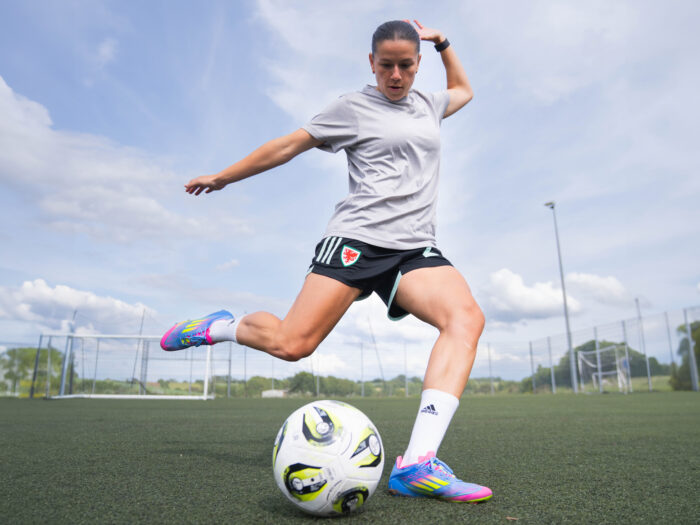
How does nutrition differ for female footballers?
Although the foundational principles of fuelling, ie. sufficient carbohydrates, high-quality protein, hydration and micronutrient intake, are broadly similar to those for male athletes, there are important differences.
Firstly, female athletes should focus on fueling to achieve their energy requirements to support training and competition, particularly during intensive periods. If the energy intake is less than the energy the athlete is expending, it could lead to low energy availability (LEA), increasing the risk of health complications like menstrual disturbances, poor bone health, impairments in gastrointestinal and neurological function, and increased injury risk (Sims et al., 2023).
Iron status is another key concern. Due to the increased requirements as a result of menstrual blood loss and the demands of training, female footballers with low iron intake are at higher risk of iron deficiency anaemia, which can impair aerobic capacity and delay recovery (Burke, 2014). Adequate calcium and vitamin D are also vital to support bone strength, especially in younger athletes still reaching peak bone mass.
What role does nutrition play in performance?
Nutrition underpins every aspect of football performance. Pre-match meals rich in carbohydrates help to maximise muscle glycogen stores; the primary energy source during high-intensity exercise (Burke et al., 2011). During matches and training, adequate hydration and carbohydrate intake can delay fatigue and help maintain concentration and decision-making skills.
Recovery nutrition, particularly the timing and composition of meals and snacks, is equally critical. Consuming protein (around 20–25 grams) shortly after training supports muscle repair and adaptation, whilst replenishing carbohydrates accelerates glycogen restoration, preparing the body for the next session.
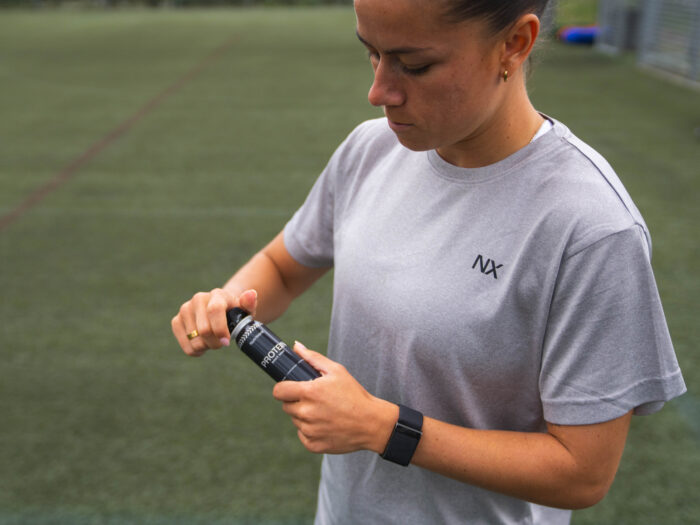
For female players, who may have a tighter window for recovery if training frequency is high, these strategies are especially important. Proper fuelling can be the difference between consistent performance and prolonged fatigue.
Do hormones impact performance for female footballers?
Hormones have a normal and profound effect on the female athlete’s body. For women who have regular periods, the menstrual cycle is driven by fluctuations in oestrogen and progesterone, which influence not only reproductive health but also metabolism and nutrient needs. It is important to recognise the various hormonal environments that the female athlete of reproductive age may experience, and whether the athlete is using any hormonal contraceptive (Sims et al., 2023).
For instance, during the follicular phase (the first half of the cycle), oestrogen levels rise, which may enhance carbohydrate metabolism and recovery capacity. In the luteal phase (the second half), progesterone increases, leading to higher body temperature (0.5-1.0 °C), increasing the perception of fatigue - especially in hot conditions - and fluid retention. Some athletes also report discomfort symptoms like bloating during this phase, but this would vary for every female athlete.
Some studies have suggested a potential connection between hormone levels and ligament laxity, potentially increasing the risk of ACL injuries (Herzberg et al., 2017). This hormonal variation underscores why female footballers must understand and track their cycles to adapt training and nutrition strategies accordingly.
How do hormones impact athletic performance?
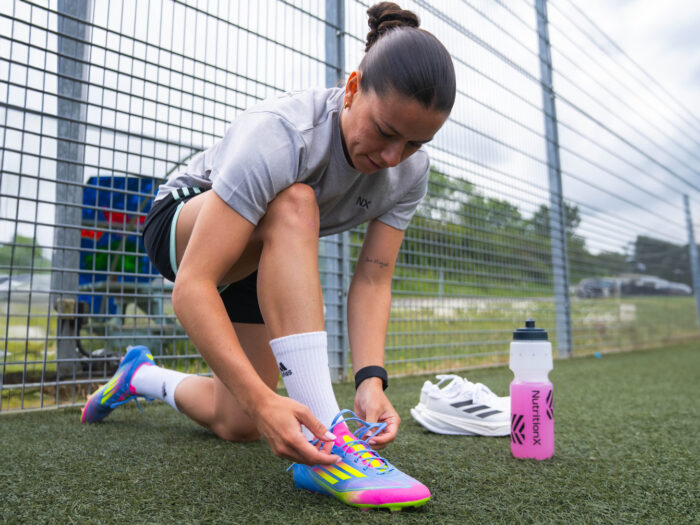
The impact of hormones goes beyond just how the body uses energy. For example, higher progesterone levels during the luteal phase are linked to increased protein breakdown, which means female footballers may need more protein at this time. This would mean aiming for the higher range of protein in sport nutrition guidelines (1.2-2g per Kg BM/day) to aid recovery, and taking on additional carbohydrates during exercise to help reduce the breakdown of amino acids (Rocha-Rodrigues et al., 2021).
To maximise muscle building in both phases, it’s recommended to eat about 0.4 grams of protein per kilogram of body weight per meal. Aim for one meal after exercise and, if you can tolerate it, another meal 1–2 hours before going to sleep (Moore, Sygo & Morton, 2021).
Oestrogen also plays a protective role in muscle damage and inflammation, potentially influencing recovery rates. Fluctuations in hormones can also affect mood, sleep quality and perceived exertion, all of which contribute to performance and wellbeing.
Individual responses vary considerably, so some players may notice more pronounced changes in performance across their cycles, whilst others feel little difference. Keeping a training and symptom diary can help identify patterns and inform personalised nutrition and recovery plans.
What nutritional considerations should female footballers take?
With these factors in mind, female footballers should prioritise:
- Energy Availability: Ensuring adequate calorie intake to match training demands and support hormonal health. Chronic under-fuelling increases the risk of low energy availability.
- Fat intake: Consuming at least 20% of calories from fat, from diverse sources to avoid any deficiency in essential fatty acids and fat-soluble vitamins (A, D, E,K).
- Iron Intake: Consuming iron-rich foods (red meat, leafy greens, fortified cereals) and considering regular blood tests to monitor ferritin levels.
- Calcium and Vitamin D: Including dairy or fortified alternatives and safe sun exposure to support bone health.
- Carbohydrate Periodisation: Adjusting carbohydrate intake based on training intensity and menstrual cycle phase, whilst considering how individual physical and mental symptoms might affect the capacity to reach these daily carbohydrate goals.
- Protein Timing: Eating protein-rich meals and snacks spread evenly across the day to optimise muscle repair.
- Hydration: Creating a hydration protocol for before, during and after exercise to ensure fluid balance and electrolyte replenishment.
- Fibre: Aiming for 25-30g of fibre per day by including whole grains, fruits and vegetables in the diet to support gut health.
These strategies can help female footballers train harder, recover faster and reduce injury risk.
What supplements should female footballers consider?
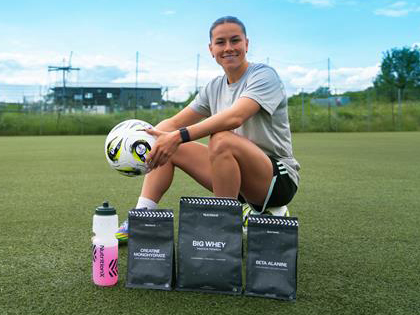
Whilst food should always be the foundation of nutrition, certain supplements may certainly be beneficial for female footballers to consider integrating into their nutrition strategy.
These include:
- Vitamin D: Most of the year, but particularly during winter months in the UK, when sunlight exposure is limited.
- Creatine Monohydrate: Evidence suggests that creatine supports strength, power and recovery, and may be especially useful for female athletes, particularly when combined with resistance training (Ramirez-Campillo et al., 2016).
- Omega-3 Fatty Acids: To help manage inflammation and support joint health, mainly if the athlete follows specific diet considerations (ie. vegan athletes/ low food sources during the week).
- Caffeine: A well-established ergogenic aid that can improve endurance and alertness for training and matches.
Nutrition for female footballers is about far more than fuelling training; it is a cornerstone of health, performance and long-term development. From managing the impact of hormones to preventing nutrient deficiencies and supporting recovery, a well-planned diet can help female players reach their full potential on the pitch.
Check out our full range of supplements for football players here.



